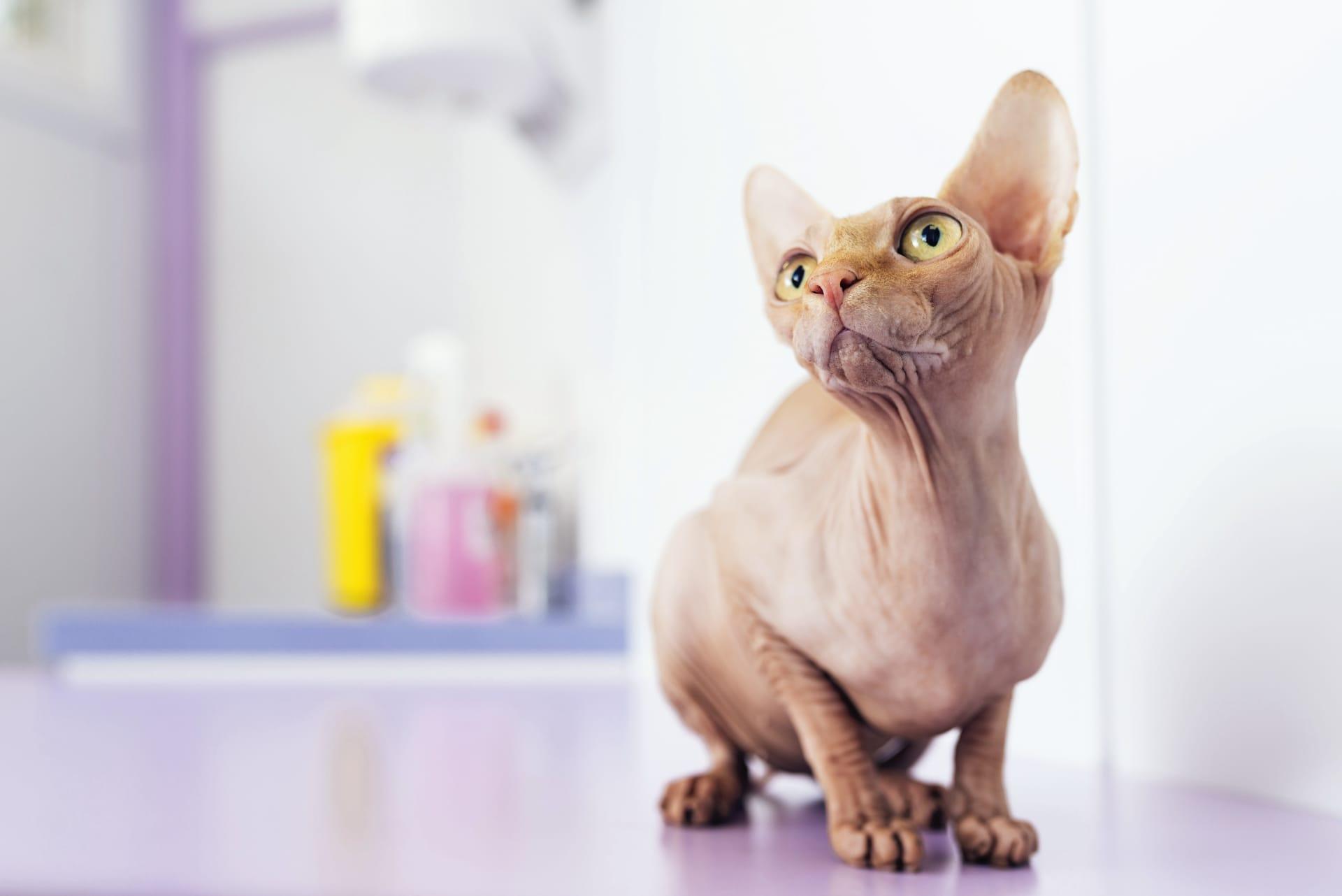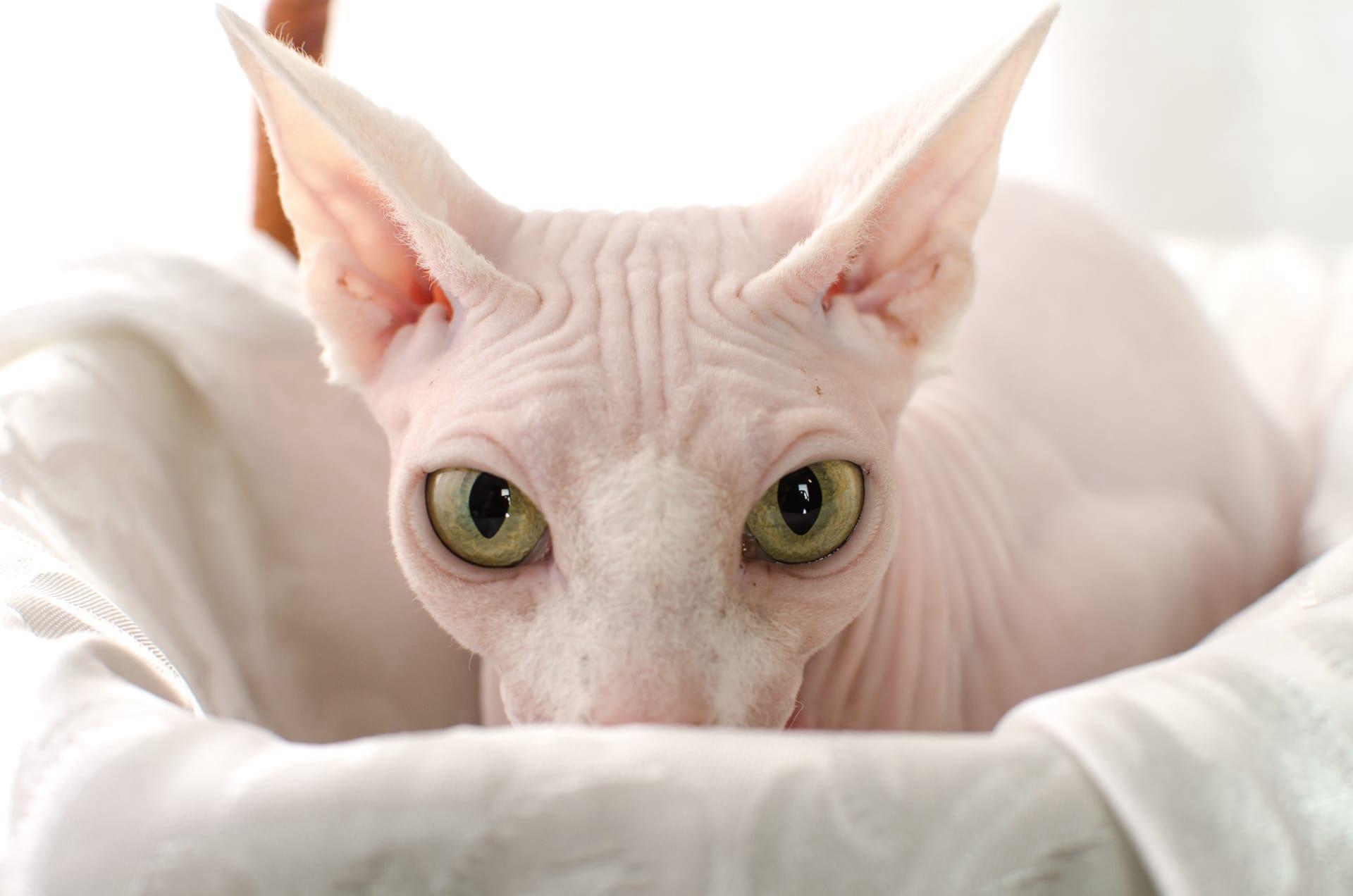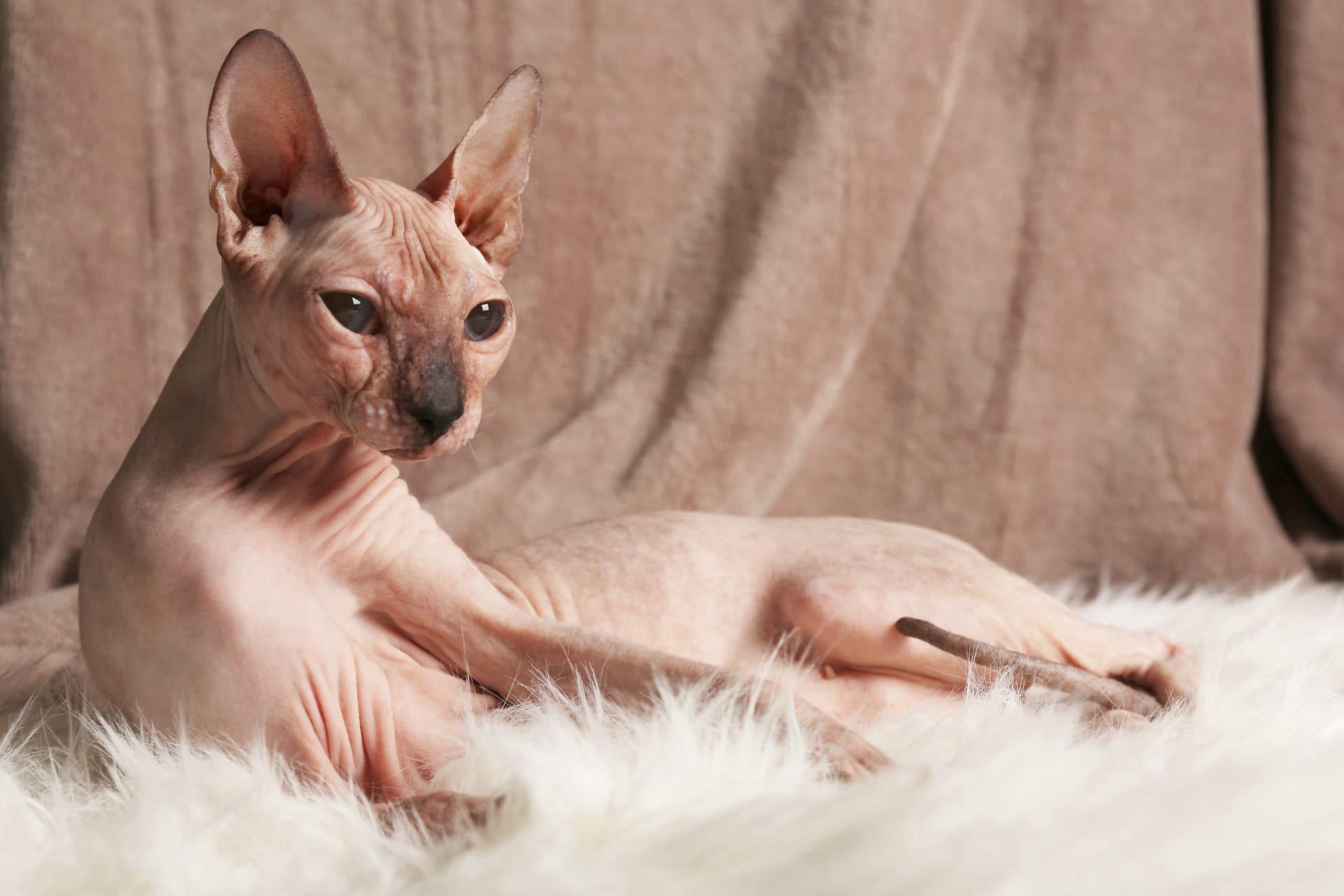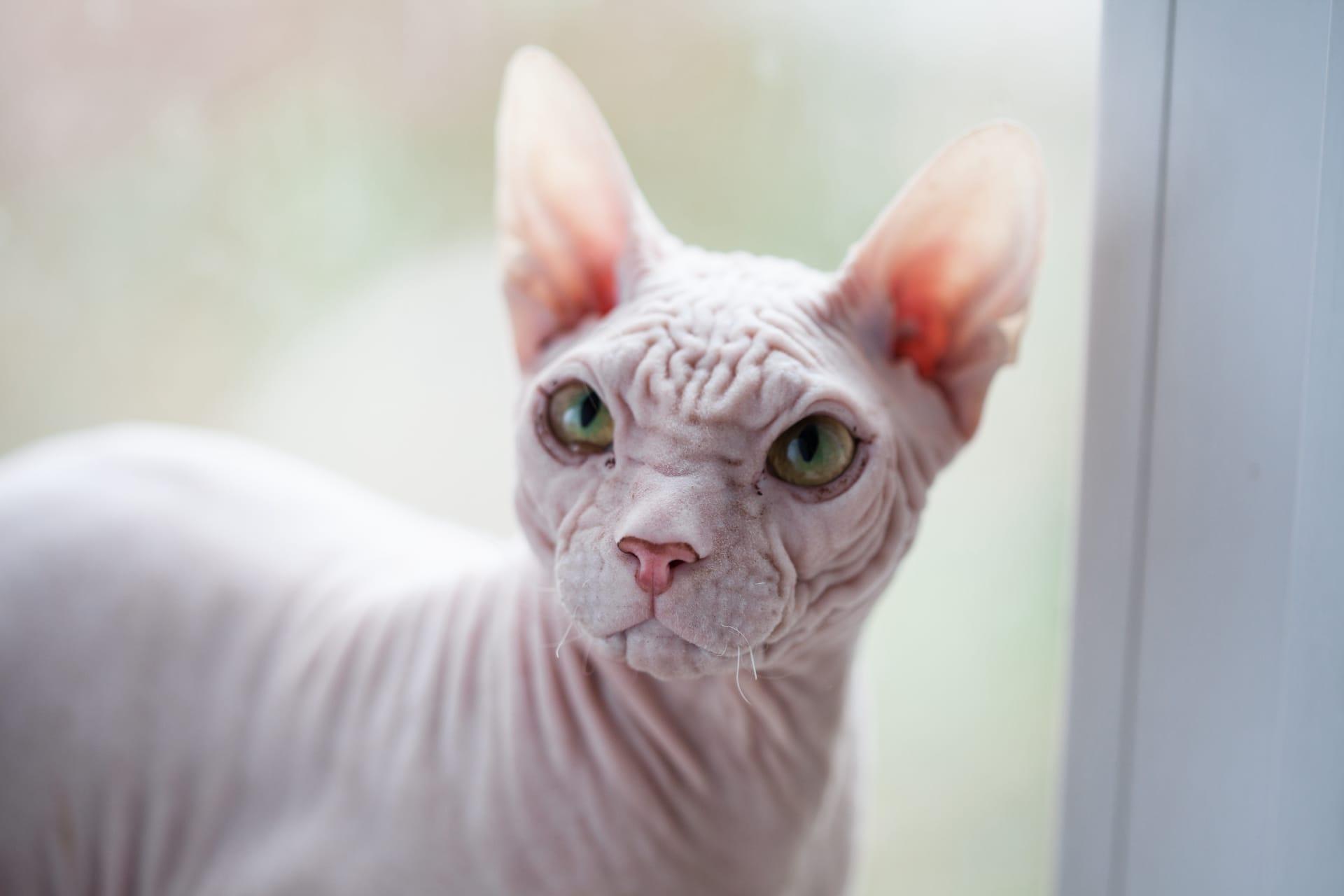Sphynx Cat Characteristics
- Home /
- Mini Encyclopedia /
- Animal /
- Sphynx Cat Characteristics
1
The Sphynx Cat, known for its lack of fur, boasts a muscular body and a medium to large size. Adult Sphynx cats typically weigh between 6 to 12 pounds, though males can be larger. Their skin, which feels like a warm peach, is covered with a fine layer of down. Despite their exotic appearance, Sphynx cats share a common lifespan with other domestic cats, living on average between 13 to 15 years. This breed's health and longevity can be significantly influenced by their care, environment, and genetics.
One of the most distinctive organs of the Sphynx Cat is its large, lemon-shaped ears. These ears, larger in proportion compared to other cat breeds, serve a critical function beyond hearing. They help in dissipating body heat, a vital process for a breed without fur. This unique adaptation aids in regulating their body temperature, showcasing an evolutionary response to their lack of a traditional insulating coat. The ears require regular cleaning due to their size and openness, as they can accumulate more debris and oils.

2
Question: Do Sphynx Cats require more grooming than furry cats?
Answer: Contrary to what one might assume, Sphynx Cats do require a unique grooming regimen, although they lack fur. Their skin produces oils that, in furry cats, are absorbed by the fur. Without hair to absorb these oils, Sphynx cats can develop skin issues if not bathed regularly. Experts recommend bathing a Sphynx cat once a week to remove oil buildup and prevent skin problems. Additionally, their ears need frequent cleaning to remove wax and debris, and their nails should be cleaned since there's no fur to protect against oil accumulation.

3
Sphynx Cats are known for their high energy levels and agility. They are incredibly playful and enjoy engaging in activities that challenge their physical and mental abilities. Climbing, jumping, and interactive play are among their favorite pastimes. Their love for exploration makes them active participants in household adventures, often seen scaling heights or chasing toys with remarkable dexterity.
In terms of feeding, Sphynx Cats have a higher metabolism due to working harder to maintain body heat without the insulation of fur. This results in them requiring more food than their furry counterparts. A high-quality diet rich in protein is essential to support their energy needs. It's advisable to feed them small, frequent meals throughout the day to sustain their energy levels and support their health and growth.

4
The ideal living environment for a Sphynx Cat is indoors, where temperatures can be kept consistent. Their lack of fur makes them susceptible to cold, so a warm and cozy setting is crucial. Additionally, these cats can get sunburned; hence, direct sunlight exposure should be limited. Sphynx cats thrive in environments that offer plenty of stimulation and affection, demonstrating their social and loving nature.
Sphynx Cats are known for their reproductive vitality. Females can begin their reproductive cycle as early as five months of age, with breeding typically recommended to start after one year of age for health reasons. They can have multiple litters a year, with the average litter size ranging from two to five kittens. Breeding Sphynx cats requires careful consideration of genetics and health to ensure the well-being of both the mother and her kittens.

5
Book: "The Naked Truth About Sphynx Cats" by Dr. Julie Strickland. Published in the United States, 2010, this book offers a comprehensive look into the care, health, and behavior of Sphynx Cats. Dr. Strickland, a veterinarian with extensive experience in feline medicine, provides insights into the breed's specific needs, debunking myths and offering practical advice for current and prospective Sphynx cat owners.
Book: "Sphynx Cats: A Complete Pet Owner's Guide" by Barry Richards. Hailing from the UK in 2015, Richards' book serves as an essential manual for anyone interested in this unique breed. Covering topics from history and breed development to grooming and nutrition, the guide provides a detailed overview of what it takes to live happily with a Sphynx Cat. Richards' passion for the breed shines through, making it a valuable resource for both new and seasoned Sphynx enthusiasts.